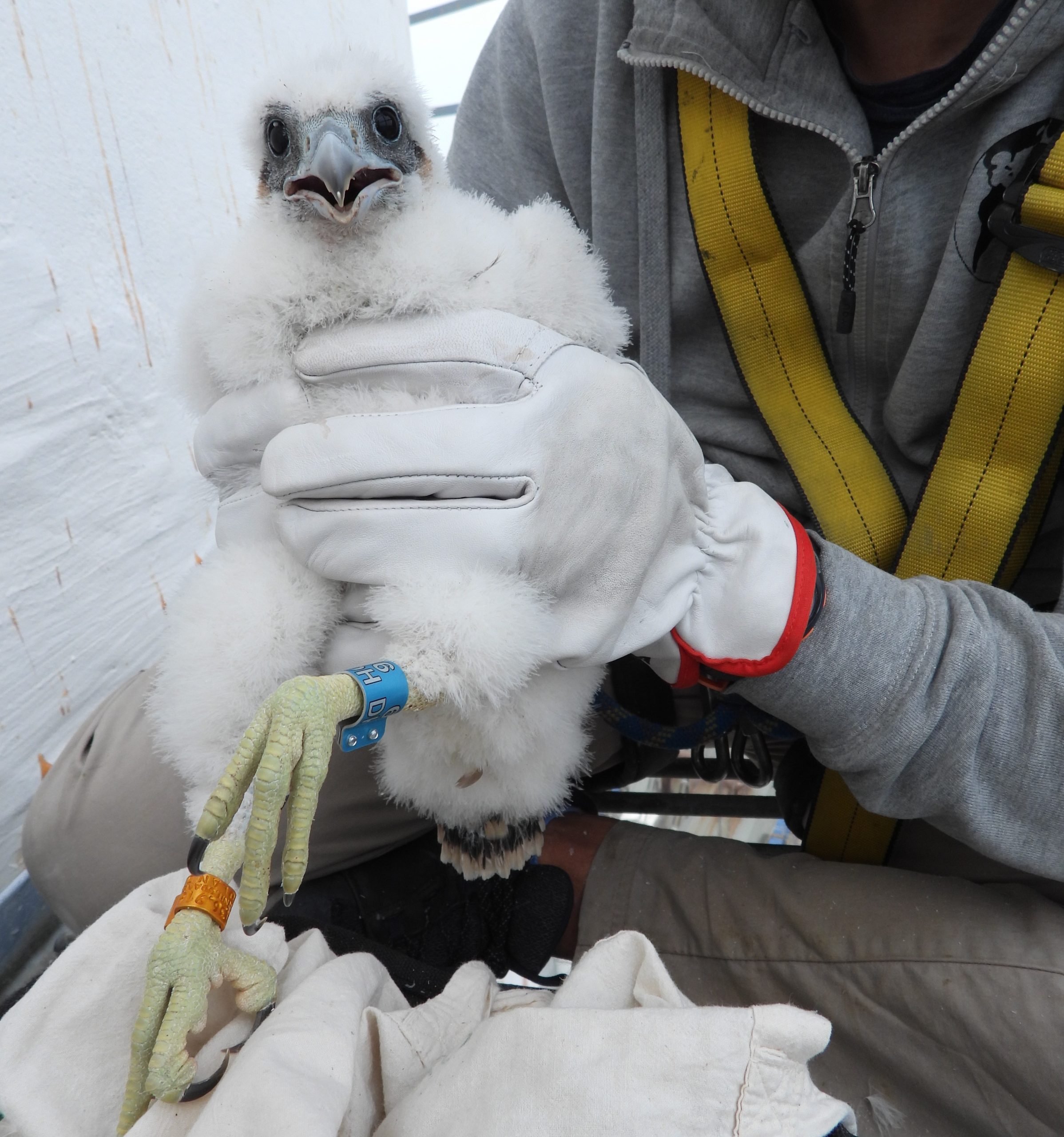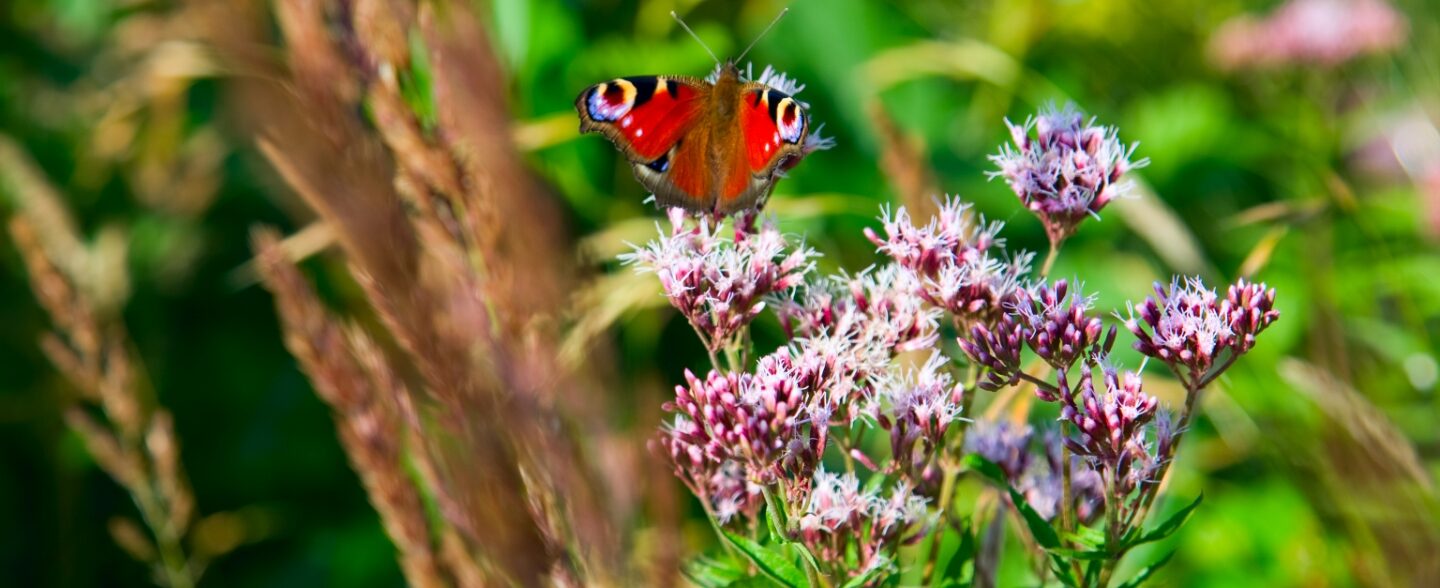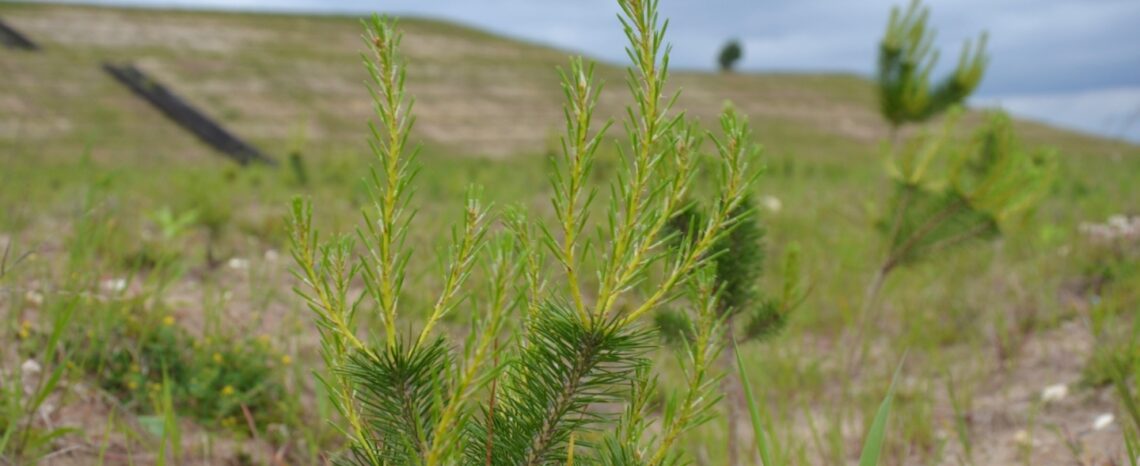-
304-1
-
304-2
When planning new projects, PGE each time analyses its impact on the natural environment and ecosystems. In addition to analyses of the potential impact of new investments and modernisation of existing ones, PGE also meets the challenges related to the protection of biodiversity, understood as the multiformity and variability of life on Earth in all its forms and interactions, which includes diversity within species, between species and the diversity of ecosystems.
Locations in the vicinity of protected areas or areas of high biodiversity value
PGE Group sites are not located in protected areas, however some of the companies’ branches are adjacent to them. Therefore, PGE monitors these areas to avoid any negative impact of its operations.
The following are located near the Bełchatów mine:
- Łuszczanowice nature reserve (approx. 9.5 km),
- Murowaniec nature reserve (approx. 15 km),
- Widawka valley, in the nearest distance approx. 5 km.
In the case of the Turów mine, it is located close to Natura 2000 areas. Two protected areas are located in the vicinity of the Turów mine:
- Natura 2000 area „Przełomowa Dolina Nysy Łużyckiej” – a section of the Nysa Łużycka valley from Trzciniec to Zgorzelec,
- Natura 2000 area „Neißegebiet.” This area includes the floodplain of Nysa Łużycka and the preserved forest fragments connected to it. The area is complementary to the Polish side of the Natura 2000 area „Przełomowa Dolina Nysy Łużyckiej.” Together they encompass the entire Nysa Valley with the preserved ecosystems in its immediate surroundings.
There are also three natural monuments located in the vicinity of the open pit and the former external dump of the Turów mine:
- fossil stem of the conifer Taxodixylon gypsaceum,
- small-leaved lime tree,
- pedunculate oak.
In case of the Rybnik plant, on the northern side of the site and around the „Rybnik” Reservoir there are natural protected areas in the form of Cystercian Landscape Compositions of Ore Mountains Landscape Park. South of the power plant there is the Okrzeszyniec valley. The nearest Natura 2000 areas are located several kilometres from the power station:
- Special Bird Protection Area „Stawy Wielikąt i Ligota Tworkowska”. (approx. 17 km),
- Special Area of Habitat Protection Stawy Łężczok (Nędza) (approx. 17 km),
- Special Habitat Conservation Area Graniczny Meander Odry (approx. 26 km),
- Special Protection Area of Dolina Górnej Wisły (approx. 38 km),
- Special Area of Habitat Protection Tarnogórsko-Bytomskie Podziemie (approx. 40 km).
In the vicinity of Elektrownia Dolna Odra there are the following forms of nature protection: a landscape park, five Natura 2000 areas, five nature monuments (more than 116 trees), an ecological grassland and a nature and landscape complex. In the immediate vicinity of the Dolna Odra plant there are two partly intersecting areas under protection within the Natura 2000 network. These are:
- Dolina Odry Special Habitat Conservation Area (Habitats Directive) (approx. 0.8 km),
- Dolina Dolnej Odry Special Protection Area (Birds Directive) (approx. 0.3 km),
- Dolina Dolnej Odry Landscape Park (approx. 1.3 km).
PGE Group’s CHPs operate in industrial areas where there is a limited degree of biodiversity. In PGE Energia Ciepła locations, especially within the boundaries of areas to which the company has a legal title, there are no Natura 2000 areas or other areas subject to protection under the Act of 16 April 2004 on nature protection (e.g. national and landscape parks, etc.). There are also no large or small ecological corridors. The site is fenced, so there is no possibility of animals entering. However, in the closer and further vicinity of PGE Energia Ciepła installations there are such areas, therefore they are taken into account at the stage of investment preparation.
The following areas are located in the vicinity of the Pomorzany CHP:
- Dolina Odry Special Habitat Conservation Area,
- Dolina Dolnej Odry Special Protection Area (Birds Directive) (approx. 200 m),
- Areas important for the condition of the urban environment and preservation of biodiversity include allotment gardens, the valley of the Bukowa river, housing estate greenery, street greenery, biologically active areas accompanying buildings and developed areas, publicly accessible greenery (squares, plazas) and the Odra river with its wetlands.
The Szczecin CHP is situated approx. 1.3 km from two Natura 2000 areas, i.e.
- Dolna Odra Special Habitat Conservation Area,
- Dolina Dolnej Odry Special Protection Area.
The exception is the combustion waste landfill, which is located in the immediate vicinity of the areas mentioned, next to the Odra river.
There are protected areas in the vicinity of PGE Energia Odnawialna facilities. Technological processes, equipment operation and investments carried out do not cause interference in biodiversity of these areas. There are Natura 2000 special habitat areas (SACs) in the vicinity of the sites.
The following areas are located in the Solina branch:
- Areas of Protected Landscape,
- Beskid Niski Protected Landscape Area and Wschodniobeskidzki Protected Landscape Area – there are two protected landscape areas in the Lesko county,
- Wschodniobeskidzki Protected Landscape Area,
-
Landscape parks – in the Lesko county:
- Landscape Park of Góry Słonne,
- Ciśniańsko-Wetliński Landscape Park,
- Dolina Sanu Landscape Park,
- Natural monuments – Skałki Myczkowieckie,
- Nature reserves: Koziniec, Nad Jeziorem Myczkowieckim and Przełom Sanu pod Grodziskiem – in the vicinity of Solina and Myczkowce,
-
Natura 2000 sites of European Community importance – only in the area of the Lesko county, there are no such sites in the vicinity of the use:
- Góry Słonne,
- Dorzecze Górnego Sanu,
- Bieszczady,
-
Natura 2000 areas – Special Bird Protection Areas
Two special bird protection areas Natura 2000 have been established in the Lesko county:- Bieszczady,
- Góry Słonne.
PGE Dystrybucja’s office buildings are not located in Natura 2000 areas or other areas subject to protection under the Nature Conservation Act of 16 April 2004 (e.g. national and landscape parks, etc.). There are also no large or small ecological corridors in the area. However, electric power lines run through protected areas and there are various types of switching stations in them – among others within the boundaries of the Wigierski, Biebrzański and Narwiański National Parks, Puszcza Piska, Białowieska, Augustowska, Knyszyńska and Kampinoska Forests, Landscape Parks: These include Międzyrzecza Warty i Widawki, Wzniesień Łódzkich, Nadbużański, Mazowieckie, Chojnowski, Spalski, Sulejowski and Bolimowski Landscape Parks, Natura 2000 Areas: Pradolina Warszawko-Berlińska, Dolina Przysowa i Słudwi and the Jeziorsko Reservoir, as well as the protected areas of the Bieszczady and Roztocze Mountains.
Efforts for biodiversity
PGE Group is actively working to preserve and develop biodiversity. Monitoring of non-forest habitats and protected plant species as well as forest habitats is carried out in the vicinity of mines.
The following survey work was carried out at the Bełchatów mine in 2021 as part of the monitoring:
- Monitoring of spring pasqueflower and marsh helleborine,
- Monitoring of Natura 2000 non-forest habitats – lowland fresh meadows used extensively,
- Monitoring of hydrological conditions in peatlands,
- Monitoring of protected peatland species,
- Monitoring of rare and protected species: swamp fern, common yew, wolfsbane laurel, common melliferous helleborine, mountain ash,
- Relocation (metaplantation) of mountain ash and common swamp from Uroczysko Stróża to the Bełchatów Forest District, Borowiny Forestry,
- Active protection of Natura 2000 habitats – monitoring of light oak, implementation of active protection works at the site Wola Wiewiecka, Forest District Radomsko.
In terms of monitoring forest ecosystems in 2021, studies were carried out on damage to stands in habitats such as: wet forest, fresh mixed forest, wet mixed forest, fresh mixed forest, wet mixed forest, swampy mixed forest, fresh forest, alder swamp. Additionally, recommendations for wet and swampy habitats were developed as part of this monitoring.
Within the area of the rehabilitated external dump of the KWB Turów branch there is a diversified natural environment (habitats of numerous representatives of both plant and animal world, including many rare and protected species). In the course of the inventory of animals carried out by ecologists and foresters it was found that the following species live here: roe deer, wild boars, foxes, muskrats, hares, badgers, martens, polecats, weasels and ermine. Birds are represented by many species, both migrating, breeding and wintering. Some of them, such as the kestrel or tawny owl, are now counted among the species which are becoming rarer in Poland. The wetlands are home to numerous amphibians and reptiles, including protected tree frogs, fire-bellied toads, mountain newts, grey toads, viviparous lizards and grass snakes. The flora is represented by more than a hundred species of woody and herbaceous plants. Some of them were introduced during recultivation works, but most of them found their way here by natural succession, finding favourable conditions for living. The resulting ecosystem is a constantly evolving environment, undergoing constant changes and transformations. With the passage of time the biodiversity of the former heap will increase. The plants introduced in the course of recultivation works, through their influence on the surrounding environment, are already paving the way for other, more demanding species. This is evidenced, among other things, by the observed phenomenon of animals migrating from the adjacent areas not transformed as a result of mining and settling in rehabilitated areas.
As part of a biodiversity study in 2021, the Turów plant conducted a study on mercury content in ichthyofauna (fish). The study was carried out at measuring stations of the Miedzianka and Nysa Łużycka waters.
On-going nature research makes it possible to learn about the real impact of the company’s activities on species richness. The observations made during nature monitoring have shown positive effects of the activities carried out so far. PGE Energia Odnawialna participates in the costs of restocking rivers and lakes in accordance with the provisions of water permits, and the constructed fish ladders enable unimpeded fish migration. In the area of restocking rivers, it also cooperates with anglers’ associations.
In 2021 the Dychów branch took an active part in drawing up plans for conservation tasks for Natura 2000 areas, such as the Krośnieńska Dolina Odry and Dolina Dolnego Bobru areas. Another fish ladder (in Stare Raduszec) was also put into use.
The green areas owned by the company are maintained by employees and cleaning services. Investigations of wind farms in operation did not indicate any need for significant biodiversity protection measures. Should such a need arise, preventive measures will be taken. Nature surveys will continue in the coming years.
The Dębe hydro power plant has a fish ladder to allow fish migration. As regards EW Smardzewice, PGE Energia Odnawialna participates in the costs of restocking the Pilica river. Out of 21 power plants operating in the Odra river basin, only five do not have a fish ladder: EW Rakowice, EW Kliczków, EW Małomice, EW Żarki Wielkie and EW Gubin.
In 2021, PGE Energia Odnawialna continued to conduct bird and bat monitoring at its wind farms Resko II, Kisielice II, Karwice, Lotnisko and Wojciechowo. Last year’s monitoring carried out on these wind farms were the last cycles of research within the framework of natural observations of ornitho- and chiropterofauna (birds and bats). On-going nature research makes it possible to learn about the real impact of the company’s activities on species richness. In the case of positive effects, the observations made during the natural monitoring make it possible to undertake actions conducive of their preservation. Whereas if significant negative effects occur, it will be possible to take preventive measures. The nature monitoring of the wind farms so far has not indicated a need to undertake actions increasing the protection of biodiversity.
PGE Dystrybucja takes care to protect birds, including storks. To this end, it undertakes actions aimed at increasing their safety.
Due to the location of their nests on electricity poles, storks are particularly exposed to the risk of electrocution. For years, metal platforms have been put up on poles above the power lines for the storks to make their nests. This prevents direct contact between the storks and the power lines, which significantly reduces the risk of electrocution, especially for young storks. Currently, there are about 27 000 such platforms or other protective devices placed on the company’s premises. More than half of them are located in the Białystok branch of PGE Dystrybucja S.A. where, due to exceptionally favourable living conditions, the occurrence of storks is the highest in Poland. In order to protect the birds, the power infrastructure of PGE Dystrybucja is additionally equipped with special protection devices: platforms, deterrents, colourful balls suspended on lines.
Energy professionals between 2018 and 2021 secured 300 medium voltage facilities as well as installed 100 reflective rotating markers over the Biebrza and Narew rivers, 120 protections on power line poles and built 50 platforms for stork nests. As part of stork protection, PGE also repairs damaged platforms. This work is carried out between mid-October and the end of February, when the storks fly out of Poland for the autumn-winter period. The protective season for storks starts after that period.
Restoration of the peregrine falcon population
-
304-4
The peregrine falcon is one of the rarest bird species in Poland, and 20 years ago it was almost non-existent in our country. There are currently 80 pairs of falcons in Poland and they are under strict species protection. PGE Group has been actively working to restore the peregrine falcon population in Poland for 19 years.
Over the years, falcons have taken a liking to PGE’s chimneys. For the first time ornithologists spotted a pair of falcons on the premises of the Dolna Odra power plant complex in 2003 and then the first nestlings were ringed. In the following years, the birds settled in nests prepared for them on chimneys of heat and power plants in Gdynia, Gdańsk, Toruń, Lublin and on the chimney of the power plant in Bełchatów, at the Dolna Odra power plant complex. In 2020 and 2021, 18 chicks were hatched and ringed in six nests in PGE branches. Since 2003, 110 young falcons have fledged from nests located on PGE Group installations, which constitutes 19.43% of all young peregrine falcons that have been born in Poland in urban areas since 1999 (a total of 566 nestlings have hatched).

In the area of the Dolna Odra power plant complex, apart from falcons, there are also protected sand martins nesting in the inactive section 4 of the furnace waste dump, as well as kestrels living in the chimneys and units of the power plant. The swallows have adapted the slopes created as a result of ash-slag extraction as their habitat. Their protection consists mainly in protecting young birds, which often fall out of their nests during the first flights.
Partnerships for biodiversity
As part of activities related to the restoration of the peregrine falcon species, PGE cooperates with the Association for Wild Animals „Sokół.” As part of the cooperation, cameras were placed on falcon nesting boxes installed in heat and power plants in Gdynia, Toruń and Lublin, which allow viewing the birds online on the website peregrinus.pl.
The opportunity to watch live the family life of the peregrine falcon is intended to spread knowledge about the restoration efforts of the species. It also allows indirect contact with nature, especially the unreachable, as in the case of the peregrine falcon, which usually has its nest at an altitude of one hundred metres. Observing the life of peregrines is extremely popular. Statistics show that the highest number of nest viewing visits occurs in May. In this month alone, more than 670 000 visits to the peep-holes established on PGE chimneys can be recorded. The Group organises naming contests for young falcons, with nearly 3 000 participants each time. Posts and videos promoting PGE’s activities in the field of peregrine falcon protection are published on PGE Group’s YouTube channel and social media.
PGE also supports the „Sokół” Association in its information and education activities, encouraging local communities to take an interest in the life of wild birds. At the Gdynia CHP, it is a tradition to invite children from a nearby primary school to a „live” nature lesson, during which they have the opportunity to see the process of ringing young birds.
PGE also cooperates with other associations and foundations whose goal is to protect birds. These include the Białystok branch of the Polish Society for the Protection of Birds (PTOP), the Ecological Group from Siedlce, the „Chance for Stork” Association from Kozubszczyzna and the Lublin Ornithological Society.
Thanks to an agreement with PTOP, the project „Protection of white stork in river valleys of eastern Poland” was implemented between 2017 and 2021, with the main objective of reducing white stork mortality due to electrocution.
PGE Group is also involved in a number of other projects in the area of ecology, nature and climate protection. It supports national parks, cooperates with the Regional Directorates of the State Forests, forest inspectorates, ornithological associations and other organisations working for the benefit of nature and climate protection. PGE is also a strategic partner of the League for Nature Protection.
Forests Full of Energy
The objective of the Forests Full of Energy program is to improve air quality and the condition of groundwater as well as to restore tree stands in Polish forests. The program develops appropriate social and ecological attitudes among employees and their families, and fosters the establishment and maintenance of good neighbourly relations between PGE Group and local communities.
In the implementation of the program’s assumptions, PGE cooperates with the Regional Directorates of State Forests in order to jointly take care of forests. Foresters develop planting plans and prepare seedlings, and PGE employees, mobilising their families and local communities, come to places designated by foresters to plant trees. Over time, scouts and school children have joined the program.
League for Nature Protection
PGE Polska Grupa Energetyczna and the League for Nature Protection signed a strategic partnership agreement in 2021. The cooperation assumes the implementation of activities in the field of environmental protection and nature and ecological education.
The cooperation assumes the implementation of activities in the field of environmental protection and nature and ecological education.
As part of the strategic partnership between the League for Nature Protection and PGE, the PGE Foundation together with the League carries out environmental, educational and ecological projects.
Revitalisation of the Crooked Forest
The Crooked Forest is a natural monument located in the Gryfino Forest Inspectorate, in the direct vicinity of the Dolna Odra power plant. This is a cluster of nearly a hundred-year-old unusual pine trees, which due to their age in some places show a tendency to die. The revitalisation of the Crooked Forest will involve the construction of an educational path and tourist infrastructure based on exposing the most beautiful fragments of this natural monument, as well as the establishment of two experimental pine plantations from seeds obtained in the Crooked Forest. Funds for this purpose were provided by the PGE Foundation, which is the Strategic Partner of the Project.
Cooperation with national parks
PGE has also established cooperation with the Park with regard to the education of children and young people, the protection of cultural and historical values in the Park, and active nature conservation.
PGE Group and the PGE Foundation supported the Biebrza National Park both financially and substantially in the implementation of the project to install photovoltaic panels on two buildings of key importance to the Park: Education and Management Centre in Osowiec-Twierdza and Animal Rehabilitation Centre and Tourist Information Building in Grzędy. This is the first photovoltaic project, developing renewable energy sources, carried out jointly by PGE and a national park. The Foundation donated the funds for the installation of the panels, and PGE Group’s employees will provide the Park’s management with expert support, which made it possible to realise the construction of both power plants according to the most optimal parameters.
Support for the Biebrza National Park is an element of PGE Group's long-term efforts in the field of environmental protection. Low- and zero-carbon projects are a key direction in PGE Group's Strategy until 2030. The photovoltaic installation in the Biebrza National Park was delivered with financial support from the PGE Foundation. The 30.36 kWp installation will contribute to reducing CO2 emissions by more than 20 tonnes per year. In 2022, PGE will implement further joint initiatives with the Biebrza National Park. These will include educational, scientific and research, investment and active nature conservation projects.
The Biebrza National Park also hosted photography workshops for PGE Group employees, aimed at showing the beauty of the unique nature of the Biebrza river valley, vast peat bogs and extremely rare endangered plant, bird and animal species. Photographs taken during the workshops were presented at an exhibition entitled „Biebrza Valley,” presented in the Open Air Gallery of the Royal Łazienki Museum in Warsaw, in October 2021.
PGE and PGE Foundation also supported the Świętokrzyski National Park with a donation for the installation and commissioning of a photovoltaic system. Thanks to this a comprehensive energy modernization of the Education Centre and the Management of the Świętokrzyski National Park in Bodzentyn is possible.
Similarly to the implementation of the photovoltaic project in the Biebrza National Park, PGE supported the management of the Świętokrzyski National Park both in terms of content and financing. A donation for this project was made by PGE Foundation. In 2021, PGE also started cooperation with the Roztocze National Park, with regard to the protection of natural and cultural values in the park.
The project, carried out with funds donated by PGE Foundation, consisted of two tasks: a research and conservation project entitled „Roztocze storks – protection of symbols of the cultural landscape and forest backwoods” and the revitalisation of the dendrological path in the area of the former tree and shrub nursery in Florianka.



